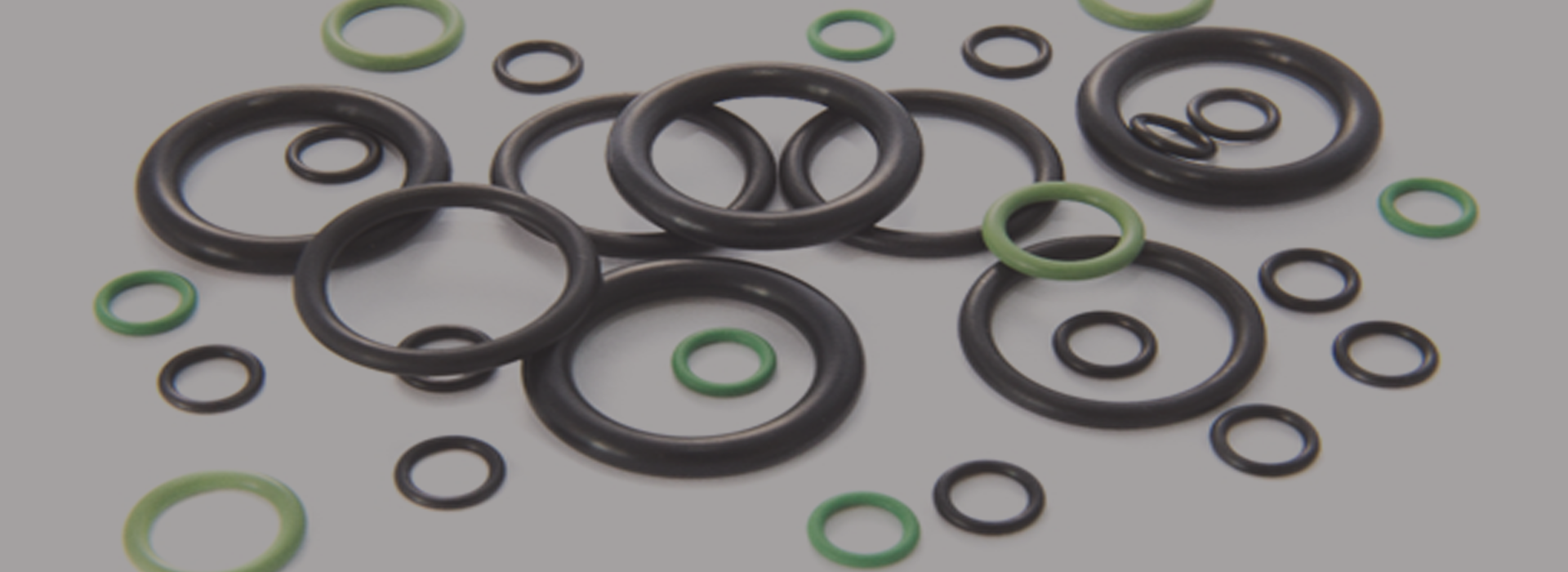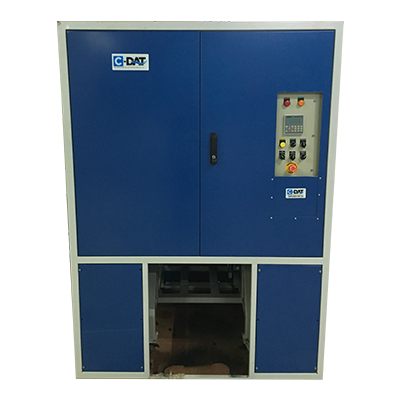The drawbacks of this system are:
-
- a) Only relatively thinner flashes are removed. Usually about 0.1 to 0.2 mm thick.
-
- b) The entire chamber incuding the impeller and the barrel carrying the parts is cooled to Tg. This results in higher liquid nitrogen consumption.
- c) Systems are expensive to own, (being imported) and expensive to operate too.
The new Indigenous System offered by C-DAT.
This system developed by C-DAT in association with Indian Institute of Science, Bangalore uses the high energy tumbling system where parts ( with or without media) are tumbled in a small closed chamber (stainless steel and urethane combination construction) creating exposure of flashes to abrasive effect of rubbing action between parts (and media). The chamber is cooled with Liquid Nitrogen and temperature is controlled to pre-set levels of the Tg of the relevant elastomer being deflashed.
Advantages of the C-DAT SYSTEM
- It is compact and has a smaller footprint ( about 50% ) of a conventional system of the same capacity.
- It can remove thicker flashes than the maximum of most foreign systems.
- The liquid Nitrogen cools ONLY the chamber carrying parts/media and hence has a much lower nitrogen consumption.
- It has a unique precooling arrangement which allows the next batch to be cooled with the exit nitrogen gas coming out of the deflasher which is still at a very low temperature compared to ambient temperatures. This is happening at the same time as the previous batch is being deflashed. This results in further savings in liquid Nitrogen consumption.
- C-DAT are simultaneously developing an add-on to this system that will enable customers to conserve flashes and rejects by milling them into powder form to be used in their own formulations. The advantage being elimination of waste (cost reduction) and use of known powder (quality conservation).
It is clear from the above that the indigenous system serves the purpose of the average indigenous rubber moulder who depends largely upon manual (direct or fixtured) deflashing which is relatively lower on productivity, expensive and fraught with poor consistency, resulting in repeatability and traceability issues.
Continuous Improvement
C-DAT is committed to take customer feedback directly to its development exercise and strive to continuously improve the product to make it a highly user friendly, economical and sought-after deflashing solution, going forward.

